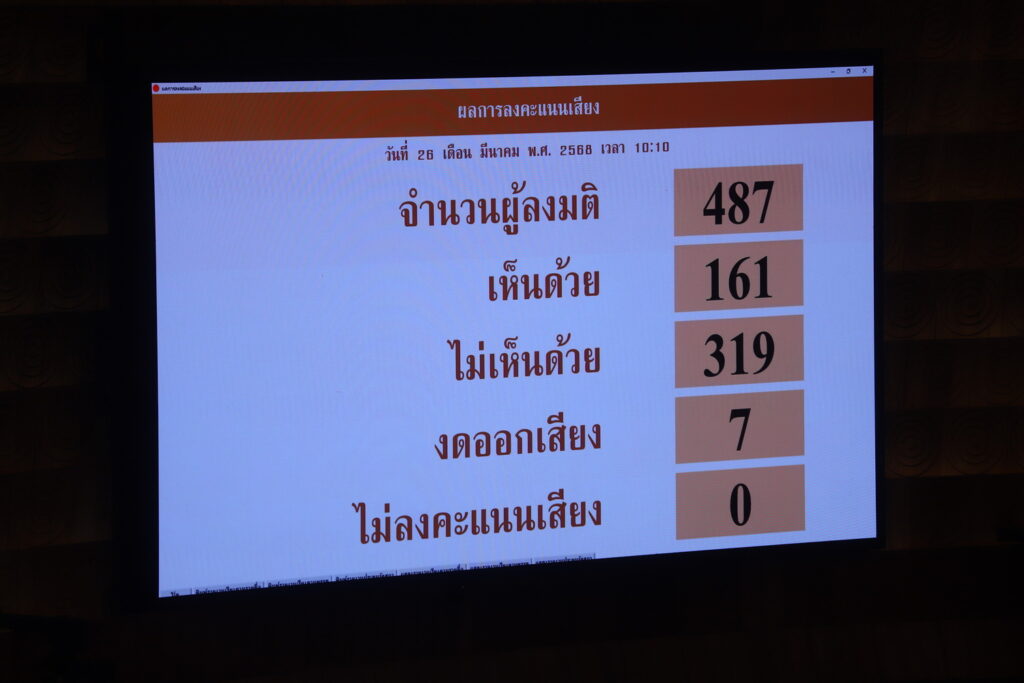A rocky start to 2025 for climate finance has reopened questions about how swiftly and meaningfully capital can shift toward decarbonisation. A wave of banks leaving the Net Zero Banking Alliance underscores the tension between rapid transition finance and evolving political and regulatory landscapes. Against this backdrop, experts debate what transition finance really means, what constitutes a credible pathway to 1.5°C, and how lenders should measure progress when robust, uniform carbon accounting standards remain incomplete. In this context, regional studies—such as the Thai banking sector’s disclosures under the Task Force on Climate-related Financial Disclosures (TCFD)—offer practical insight into the day-to-day frictions of turning climate commitments into bankable reforms. This article surveys these developments, clarifies the concept of transition finance, unpacks the guiding frameworks that shape it, and examines the policy levers that could tilt the balance toward broader, more affordable decarbonisation across economies.
Context: Transition finance in a year of upheaval and strategic recalibration
The year 2025 has opened with a notable disruption to the climate finance ecosystem. A significant number of major banks based in the United States and Canada—eleven large institutions—decided to exit the Net Zero Banking Alliance (NZBA). The NZBA is a UN-backed coalition composed of banks that pledge to advance global net-zero goals through their financing activities. The departure of these institutions signals a broader pushback against how transition finance is framed, measured, and mandated, and it reverberates across the global financial community.
Several observers interpret the exodus as closely tied to a broader anti-ESG political campaign that has gained momentum in the United States. Many of the banks that left the NZBA have substantial American exposure, even if the departures occurred within a North American context. The timing and nature of these exits raise important questions about the pace and scalability of transition finance worldwide. If a sizable regional bloc—traditionally a powerhouse for global financing—reconsiders its commitment to net-zero aligned lending, the ripple effects could be felt well beyond North America’s borders. Stakeholders in other regions are watching closely to determine whether this move signals a broader trend toward a slower, more cautious approach to transition finance or whether it represents a temporary strategic recalibration in response to domestic political dynamics.
To interpret these developments properly, it is essential to ground the discussion in a precise and usable understanding of transition finance itself. Without this foundation, debates about pace, scale, and policy incentives risk drifting into abstract rhetoric rather than tangible action. Transition finance refers to investments that enable decarbonisation of high-emitting entities and/or hard-to-abate sectors where there exists a credible pathway to decarbonisation aligned with the goals of limiting warming to 1.5°C, as opposed to a mere reduction into a less-carbon-intensive state. This definition acknowledges that some sectors—such as heavy industry, some energy systems, and long-lived infrastructure—will continue to operate in some form for years or decades, but require financial support to transform in ways that meaningfully reduce emissions.
As institutions and policymakers wrestle with what constitutes credible transition finance, two questions stand at the forefront: What constitutes a credible transition, and how should practitioners assess credibility? The definition attributed to the Rocky Mountain Institute (RMI) provides a pragmatic touchstone: transition finance covers investments that enable decarbonisation of high-emitting entities and/or hard-to-abate sectors where a credible pathway to 1.5°C-aligned decarbonisation exists. This framing emphasizes both the existence of a credible decarbonisation pathway and the investment activity that makes that pathway achievable in practice.
With that working definition in hand, it becomes clear that credibility hinges on the standards and guidelines that govern transition finance. Since 2022, a proliferation of transition finance guidelines has emerged, reflecting the diverse priorities of regulators, industry groups, and regional markets. Prominent examples include the Net Zero Banking Alliance’s Transition Finance Guide, the Organisation for Economic Co-operation and Development (OECD) Guidance on Transition Finance, and the Glasgow Financial Alliance for Net Zero (GFANZ) “Expectations for Real-economy Transition Plans.” Regional instruments include the Asia-focused transition finance guidelines issued by the ASEAN Capital Markets Forum, which seek to accommodate local market conditions while aligning with broader net-zero objectives. The second version of the Asia Transition Finance Guidelines provides a concise synthesis of existing guidelines, highlighting two overarching elements that recur across frameworks: climate ambition and robustness of the ability to deliver.
These developments underscore a wide consensus that credible transition finance must demonstrate both ambition and capability. Ambition refers to the presence of credible, Paris-aligned targets that reflect the scale of the climate challenge and the need to bring warming down toward 1.5°C wherever possible. Robustness of delivery, by contrast, concerns the practical means by which an organisation plans, implements, discloses, and monitors progress toward those targets. Together, ambition and delivery robustness form the dual pillars of credible transition finance, a framework that is both aspirational and operational.
In this evolving landscape, a central tension persists: how can financial institutions reliably verify whether a client’s decarbonisation plan is “sufficiently ambitious” and whether the client is making “tangible progress”—when mandatory carbon accounting standards are not universally implemented? This is not merely a theoretical concern. Institutional risk management and client selection hinge on the ability to interpret decarbonisation plans in a way that is consistent, transparent, and comparable across different borrowers and sectors. The absence of a globally harmonised standard for carbon accounting complicates cross-border lending decisions, risk scoring, and capital allocation for transition-related activities. These challenges have become particularly visible in regional contexts where regulatory maturity, data availability, and market infrastructure vary considerably.
A concrete illustration of these dynamics comes from a case study conducted by Fair Finance Thailand (FFT). The study, released publicly last month, examined climate-related disclosures by six Thai commercial banks in 2024. All six banks disclosed targets for reducing scope 1 and 2 emissions, albeit with different target years and intensities. These banks rely on the Task Force on Climate-related Financial Disclosures (TCFD) framework, which remains one of the most widely adopted standards for climate-related financial disclosures worldwide. The FFT study provides a granular look at how banks are approaching climate reporting in practice, highlighting both progress and persistent gaps in data quality, governance, and target setting.
The following sections translate those macro-level tensions into practical detail. They unpack what transition finance means in a real-world context, examine the governance and disclosure frameworks shaping bank decisions, and assess the policy levers that could reconcile ambition with delivery in a way that reduces costs and expands access to transition finance across markets.
Defining transition finance: Guidelines, pathways, and regional nuance
Transition finance does not have a single universal definition, and the field has evolved through the contributions of multiple international bodies and regional groups. At its core, transition finance is about mobilising capital for activities that reduce emissions where decarbonisation is progressing along a credible path toward a net-zero or near net-zero outcome. The Rocky Mountain Institute’s definition foregrounds the practical objective: investments that enable decarbonisation of high-emitting entities and/or hard-to-abate sectors where there exists a credible pathway to decarbonisation aligned with 1.5°C. This framing recognises that some sectors—and some markets—will require longer horizons, more complex transitions, and substantial upfront investment to achieve meaningful emissions reductions.
The contemporary governance landscape features a mix of global, regional, and sector-specific guidelines that guide how firms structure transition finance arrangements, how they disclose progress, and how they assess risk. The NZBA’s Transition Finance Guide provides one of the more explicit frameworks for banks seeking to align their lending and investment activities with net-zero goals. The OECD’s Guidance on Transition Finance offers a policymaker and practitioner-oriented perspective, outlining how transition finance can be designed to support credible decarbonisation while maintaining financial stability and market integrity. GFANZ, which encompasses a broad coalition of net-zero aligned financial institutions, has published “Expectations for Real-economy Transition Plans,” which pushes for explicit, verifiable plans related to climate risk and transition strategy.
In regional terms, Asia provides a particularly illustrative example of how diverse markets approach transition finance. The ASEAN Capital Markets Forum published the Asia Transition Finance Guidelines, and these guidelines have evolved through a second edition that includes a compact summary of existing transition finance guidelines. The Asia-focused guidelines reflect the need to balance ambition with the realities of local markets, where data availability, regulatory maturity, and public policy support differ markedly from one country to another. Importantly, the second edition emphasizes that climate ambition and robustness of delivery are not merely aspirational goals; they are principles designed to guide concrete business decisions, risk assessments, and reporting practices.
These frameworks converge on two central concepts that recur across guidelines: climate ambition and robustness of ability to deliver. Climate ambition translates into net-zero or near-term decarbonisation targets that are aligned with the Paris Agreement’s objective of limiting warming to well below 2°C, preferably to 1.5°C, relative to pre-industrial levels. The robustness of ability to deliver translates into the structural capacity, governance, systems, and processes that enable a borrower or project to actually realise those targets. In practical terms, this means robust, consistent disclosure—the kind of information that allows investors and regulators to assess risk, track progress, and compare performance across portfolios and timeframes. It also implies a credible implementation strategy that is underpinned by disciplined execution, monitoring, and accountability.
Despite the clarity of these guiding principles, the path to credible transition finance remains challenging for financial institutions. The two central questions—how to determine whether a client’s decarbonisation plan is sufficiently ambitious and how to evaluate progress in the absence of universal carbon accounting standards—reflect the core practical hurdles facing lenders, asset managers, and regulators. These questions are not merely academic; they shape the day-to-day decisions about which projects to finance, how to price transition-related risk, and how to structure incentives that encourage genuine decarbonisation rather than opportunistic “greenwashing.” The Thai case study highlights the depth of these obstacles in a hands-on context, illustrating the time, data, and collaboration requirements that accompany the journey from plan to performance.
The remainder of this article delves into the Thai evidence, distilling what six leading banks disclosed about their emissions targets, the challenges they encountered, and the policy measures that could belay the cost and complexity of climate disclosures. It then broadens the discussion to consider how policy design—ranging from phase-out targets for coal to mandated carbon pricing and open data initiatives—could harmonise market incentives with the climate risk real economy, ultimately expanding the reach of transition finance beyond a handful of ambitious institutions.
The practical metric: climate ambition and delivery robustness in real-world disclosures
To make sense of transition finance in practice, it helps to separate two interrelated dimensions: climate ambition and delivery robustness. Climate ambition looks at the target setting—whether organisations pursue net-zero by a particular date, whether the target covers all relevant scopes of emissions, and whether the target’s scope and boundaries reflect credible decarbonisation pathways aligned with 1.5°C. Robustness of ability to deliver, by contrast, concerns the execution plan: the concrete steps, governance structures, data collection practices, and monitoring regimes that ensure those targets are not aspirational statements but measurable outcomes.
In the Asia context, the second edition of the Asia Transition Finance Guidelines provides a concise synthesis of existing guidelines, noting that most frameworks converge on these two elements. Ambition is not a substitute for action; rather, ambition must be complemented by a credible, verifiable plan to reduce emissions over time. A robust delivery mechanism requires transparent disclosures and continuous monitoring, supported by governance that integrates climate risk into risk management, strategy, and capital allocation decisions.
Nevertheless, several practical challenges complicate the path from ambition to delivery. Financial institutions often struggle to verify the sufficiency of a client’s decarbonisation plan, particularly when climate data quality is uneven, and when accounting standards for emissions—especially scope 3 emissions—are inconsistent or incomplete. The absence of universal carbon accounting standards means that banks frequently rely on client-provided data, which may vary in quality and completeness. This dependency raises questions about the reliability of reported progress and the comparability of different borrowers’ performance.
Thailand’s experience with six commercial banks sheds light on how these issues play out in a real market setting. The FFT study analyzed 2024 disclosures under the TCFD framework, one of the world’s most widely adopted standards for climate-related financial disclosures. The findings show that, across the six banks, there was consensus on one point: all banks had set targets for reducing scope 1 and 2 emissions. However, there was variation in the specificity and timing of those targets, including differences in the aircraft of target years and in the degree of ambition for scope 1/2 reductions.
In terms of scope 3—the emissions associated with a bank’s financing activities, including emissions from the customers in the loan and investment portfolios—Kasikornbank, Siam Commercial Bank (SCB), and TISCO Bank had announced scope 3 net-zero targets, with target years that varied. Among these, SCB stood out as the most ambitious among the three in terms of scope 3 reduction, setting 2050 as the target year for net-zero scope 3 emissions. In contrast, Kasikornbank and TISCO had similarly set milestones for scope 3, but with differing target years or levels of stringency. By contrast, Bangkok Bank and TMBThanachart Bank had not declared a scope 3 target at the time of the FFT study. This divergence within six banks underscores the uneven pace of integration of financed emissions into public targets and the broader decarbonisation agenda.
The FFT study also highlighted a set of practical challenges faced by Thai banks in assessing climate risks and preparing climate disclosures. The organizations summarized the issues and recommendations into four major categories:
-
Time and resources consumed: Implementing TCFD disclosure guidelines demands substantial time and resources. For instance, Kasikorn Bank spent more than five years analyzing potential climate impacts under different scenarios before publishing its first climate report. The Bank of Thailand has similarly invested significant time and resources in hosting capacity-building and training for bank officials to enhance their understanding of climate risks and emission-reduction targets. In practice, many bank officials argued that regulators should provide more capacity-building support and practical guidance to streamline the process and reduce the opportunity costs of compliance.
-
Lack of reliable emissions data: Most information on greenhouse gas emissions originates from data supplied by customers, which can be uncertain and difficult to verify. Banks noted that collecting emissions data from clients is not straightforward, and there is no universally accepted approach to carbon accounting and valuation. Many clients, particularly small and medium-sized enterprises (SMEs), lack the resources needed to disclose emissions data. Several banks argued for the creation of an open data repository or a national database accessible to all, along with government support for carbon accounting for SMEs, as essential to improving the reliability of climate-related disclosures and enabling banks to address climate change at the national level more effectively.
-
Need for collaboration among regulators: While the Bank of Thailand and the Securities and Exchange Commission (SEC) have organized training and issued guidelines, climate-related disclosures require broader regulatory cooperation. Other key regulatory bodies, such as the Stock Exchange of Thailand (SET) and the Greenhouse Gas Management Organization (TGO), must align to ensure consistent guidelines. Banks foresee that government agencies will play an increasing role in enforcing climate-related disclosure regulations in the future, and the forthcoming Climate Change Act is expected to require banks and companies to adopt new disclosure and risk-management practices.
-
More capacity building needed: Banks view the TCFD recommendations as a suitable starting point for preparing for higher standards, such as IFRS S2, which concentrates on the financial impacts of climate change on businesses. Yet IFRS S2 imposes stringent accounting-based requirements that would demand deeper training, better data governance, and more intensive collaboration among government agencies and the Bank of Thailand to build capacity for meeting these demanding standards. The Thai banking sector’s experience thus far suggests that achieving higher-quality, more standardized climate disclosures will require a coordinated policy response that includes clear regulatory expectations, practical guidance, and investment in data infrastructure and human capital.
In a broader sense, the FFT analysis implies that many of the challenges in climate disclosure arise not from a lack of will but from the policy and institutional architecture needed to support effective implementation. If policy design can align incentives, reduce the cost of data collection, and provide a credible, shared framework for measuring and reporting emissions, many of the obstacles identified by Thai banks could be substantially reduced. The key insight is that climate risk is not confined to a subset of institutions; it is distributed across the entire economy and society. Consequently, a successful transition finance framework must be designed to support all market participants—banks, borrowers, regulators, and the public—so that the risks and opportunities of decarbonisation are managed in a holistic, inclusive manner.
From this perspective, policy design matters because it shapes the costs and benefits of transitioning away from high-emission activities. If policy choices raise the cost of financing fossil-fuel projects without providing commensurate incentives for decarbonisation, incumbent banks may fear missing out on profitable lending opportunities in carbon-intensive sectors. In Thailand, this dynamic is reinforced by the government’s use of take-or-pay commitments in power purchase agreements under which Egat (the Electricity Generating Authority of Thailand) is obligated to purchase a certain amount of electricity, guaranteeing financial returns to power producers even if demand falls short. This guarantees can make fossil-fuel investments appear low-risk in the eyes of lenders, potentially stalling the shift toward lower-emission energy sources.
To counter this inertia, the article suggests a concrete set of policy measures that could reduce the cost of transition and increase its attractiveness to a broader set of banks. First, the government could announce a phase-out date for coal-fired power plants and mandate transition plans for existing facilities. This would provide market clarity and reduce the risk of stranded assets, encouraging banks to reallocate capital toward decarbonisation projects. Second, lawmakers could advance the Climate Change Act, instituting mandatory carbon pricing and robust disclosure regulations for large companies. Third, governments could invest in open-source climate-related data, including local heat-stress maps and water-stress maps that SMEs can readily use for risk assessment. Fourth, governments could signal cooperation with multilateral development banks (MDBs) such as the World Bank and the Asian Development Bank (ADB) to structure financial innovations, including low-cost blended finance tailored to decarbonising high-emission activities. Such policy measures, deployed together, could significantly lower transition costs and broaden the pool of banks able to engage in credible transition finance, not just a few institutions already positioned to capitalise on climate opportunities.
Taken together, the Thailand case and the broader international context illustrate a practical path forward: credible transition finance requires credible targets, robust data and governance, and proactive policy support that aligns institutional incentives with the public interest in reducing climate risk. The aim is not merely to accelerate decarbonisation in a narrow sense but to create a resilient financial system in which climate considerations are embedded in every level of decision-making. The balance between ambition and deliverability demands ongoing collaboration among banks, regulators, policymakers, and industry bodies to design standards, share best practices, and ensure that financial flows ever more consistently align with climate objectives.
Sarinee Achavanuntakul, who led these analyses, serves as the Head of Research at Fair Finance Thailand and the Director of the Climate Finance Network Thailand (CFNT). Her work underscores the necessity of bridging empirical assessment with policy design, and of translating research insights into actionable recommendations that can move markets toward a more sustainable equilibrium.
Conclusion
The year 2025 has foregrounded the fragility and resilience of transition finance in equal measure. The NZBA exits by a cluster of North American banks reflect broader political and regulatory tensions that challenge consensus on the pace and scale of decarbonisation. Yet the fundamental questions remain: What constitutes a credible transition? How can regulators, lenders, and firms verify ambition and track progress in the absence of universal carbon-accounting standards? The growing body of guidelines—from NZBA’s Transition Finance Guide to OECD and GFANZ frameworks and the Asia Transition Finance Guidelines—emphasizes two enduring pillars: climate ambition and robustness of delivery. These pillars must be operationalized through credible targets, transparent governance, data-driven disclosures, and consistent measurement.
The Thai experience offers a practical lens on how these ideas play out in concrete terms. It reveals both progress—e.g., several banks committing to scope 1 and 2 reductions and some advancing scope 3 targets—and persistent challenges—data reliability, capacity constraints, and the need for regulatory coordination. The FFT case study highlights four key impediments: time and resource demands, data gaps, regulatory collaboration, and the need for enhanced capacity building. Addressing these issues requires policy interventions that reduce the cost of data collection, establish open access data infrastructures, and create incentives for banks to shift capital toward decarbonising activities without sacrificing financial stability or market efficiency.
Policy design can help resolve these tensions by providing a credible, long-term signal to the market. Phase-out timelines for coal, a comprehensive Climate Change Act with robust carbon pricing and disclosure, expanded open-data initiatives for climate metrics, and collaborative financial innovations with MDBs can collectively lower transition costs and broaden participation. If such measures take hold, transition finance can expand beyond a small cadre of enthusiastic lenders to encompass a broader cross-section of banks, borrowers, and sectors, thereby accelerating decarbonisation while protecting financial stability.
In sum, the transition finance debate remains deeply consequential for how fast and how fairly the global economy can pivot away from high-emission practices. The turbulence of 2025 should be read not as a terminal signal but as a prompt to strengthen definitions, align incentives, and build the governance, data, and policy infrastructure necessary to sustain momentum toward a more climate-resilient future. The path forward requires a careful blend of ambitious targets, rigorous accountability, and pragmatic policy anchors that incentivise investment in decarbonisation while safeguarding the integrity and resilience of financial markets.



